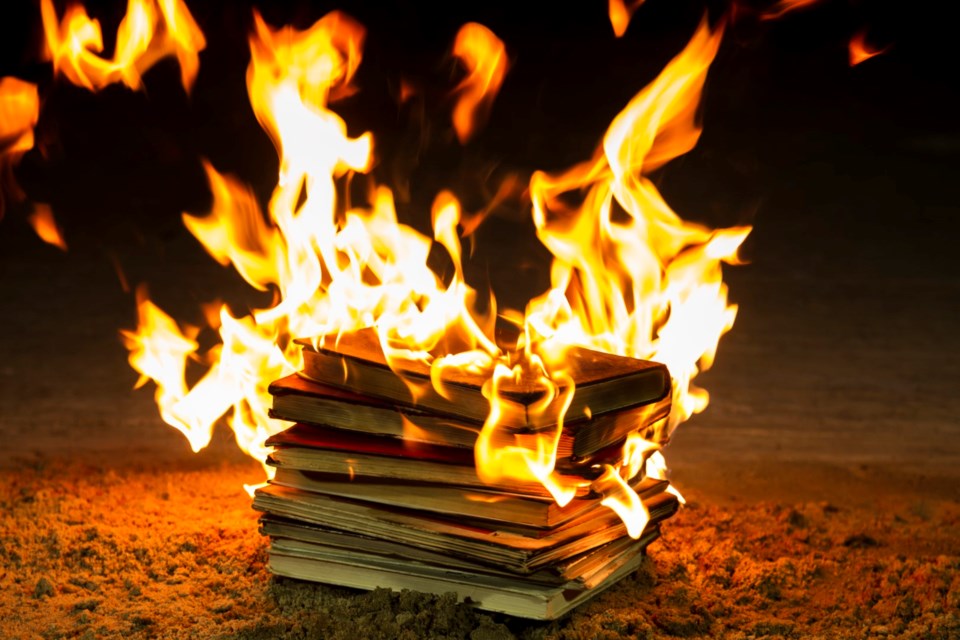From the very first line — “Christmas won’t be Christmas without any presents” — I was hooked. Never mind that my Jewish family didn’t celebrate Christmas. The world of the lively March sisters, who sang and sewed together at the family hearth, captivated me precisely because it was so different from my own.
Little did I know the “harm” it was causing.
According to diversity bureaucrats in charge of libraries at Ontario’s second-largest school board, I should never have been allowed anywhere near my favourite book, because it says nothing about my own “lived experiences.”
Recently, the Mississauga, Ontario-based citizens’ group, Libraries Not Landfills, exposed an internal training document from the local Peel District School Board (PDSB) containing instructions for librarians on how to destroy the vast bulk of their book collections, for ideological reasons.
Citing a need to “promote anti-racism, inclusivity and critical consciousness,” the document explains how to remove “any harmful, oppressive or colonial content.”
Most books published before 2008 had to go; children’s titles like The Very Hungry Caterpillar, and even Anne Frank’s Diary of a Young Girl, were pulled off the shelves. Such books are rife with “explicit and implicit biases” that make them “inherently racist, classist, heteronormative, and/or sexist.”
Books deemed harmful were to be destroyed in a “sustainable manner,” either shredded or landfilled. In an FAQ section, the document rationalized treating books as garbage by arguing that PDSB operates within a “white supremacist structure” and that these resources are to be weeded out as “not inclusive, culturally responsive or relevant.” Because of the harm they were causing, they could not be sold or donated.
News of the policy quickly created a media firestorm.
One PDSB student told the CBC that half the books in her school’s library had disappeared over the summer, including such favourites as the Harry Potter and Hunger Games series. “There were rows and rows of empty shelves with absolutely no books,” she said. Public outrage followed.
Ontario’s Education Minister, Stephen Lecce, immediately condemned the removal of books as “offensive, illogical and counterintuitive.” PDSB leadership, caught in the act, claimed it was all a simple “miscommunication,” although it was obvious from the document that staff were simply following instructions from board administrators.
PDSB's deliberate policy of book destruction provides clear evidence of the dangers posed by handing administrative control of public institutions to anti-racist activists operating under the guise of promoting diversity, inclusion and equity.
This rejection of the pluralism and freedom of thought inherent to expansive library collections is, unfortunately, infecting other components of the literary world as well, from book publishers to organizations that claim to defend Canadians’ freedom to read.
Together with a group of other children’s book authors, I wrote to the Writer's Union of Canada, the Ontario Library Association and PEN Canada (a free expression lobby group) asking for their response to the PDSB book-burying scandal. Two offered only meek statements of indifference; PEN Canada never even bothered to respond.
As a former elementary school teacher, I have seen first-hand the wide diversity of Canadian children’s literature dating back decades. Shizuye Takashima’s 1971 A Child in a Prison Camp, for example, recalls the author’s experience in an internment camp in the Second World War. Tanzanian-Canadian Tololwa M. Mollel’s gorgeous The Orphan Boy won the prestigious Governor-General’s Literary Award for Illustration in 1990. There is no diversity problem in Canadian libraries that needs fixing.
Similarly, Canadian author Joyce Barkhouse’s The Pit Pony paints a vivid picture of the dangerous working conditions of turn-of-the-20th-century Cape Breton coal miners, including child labourers. Yes, Barkhouse’s characters are all white, but her book paints a vivid picture of an earlier Canada, allowing our youngest citizens, of whatever ethnic origin, to learn about our shared history and strengthen Canadian identity in the next generation.
Insisting on “diversity” in each book, as the PDSB policy does, misses the larger picture: true diversity is achieved through a plurality of viewpoints, characters and stories within a library’s entire collection.
The PDSB's misguided book-burying crusade reminds me of the warning from the German poet Heinrich Heine: “Those who burn books will in the end burn people.”
Written in 1821, Heine’s prophecy was realized on May 10 1933 when, under the Nazi regime, Reich Minister of Public Enlightenment Joseph Goebbels orchestrated the infamous mass burning of Jewish and “un-German” books at Berlin’s Opernplatz. This was not only a symbolic destruction of literature, but a precursor to the devastating human atrocities that followed.
Well-written children’s books do not cause harm. They entertain, illuminate, enlighten and educate. They carry the legacy of our culture, the history of our societies, and the seeds of our future growth. To inspire a lifelong love of reading, we need libraries with shelves sagging under the weight of their collections. The real harm lies in destroying books.
— Marjorie Gann is a Senior Fellow with the and author and co-authored with Janet Willen. This column was adapted from the original full-length version.




